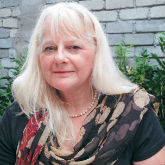This July marks the fifth anniversary of the granting of World Heritage status to the city of George Town. It will be marked, as part of the George Town Festival, with a three-day celebration of the dazzling multicultural heritage of the city and its diverse communities.
During the last half decade, Penang has changed enormously, not just in terms of its outward appearance but also its zeitgeist. It’s a happening, edgy place, with new artisan cafés springing up like mushrooms, boutique hotels emerging like butterfl ies, imaginative events bursting forth, and artists of all kinds flocking in by the dozen. It’s on the fast track to becoming a culturally creative city, a potential hot house of talent and inventiveness, which creates wealth and opportunity.
Of course, much within the heritage zone has changed. I still can remember the shabby shutters, the peeling paint, the decaying limestone walls, and the feeling of neglect. In some parts of the town, trees even grew out of abandoned shophouses, giving George Town the surreal beauty of an abandoned city. Now you cannot walk down most of the streets without scenting the freshly applied lime wash or tripping over the paraphernalia of a contractor. Though many of the renovations are sympathetic and high quality, something of the old George Town has inevitably been lost.
Families who have lived here for generations have been edged out.This is a process which has been taking place over many years, ever since the abolition of rent controls made George Town an increasingly expensive city to live in. Nowadays however, many of the old communities, the intangible heritage of George Town, are under some degree of threat because the streets where they live must be preserved and restored as well as being increasingly expensive.
Intangible heritage is the DNA of an old city. It includes the old trades of the lantern maker, paper effigy maker for funerals, rattan weaver, joss stick maker, songkat (traditional hats) maker, signboard engraver, as well as those who make traditional food as turtle-shaped biscuits for Taoist festivities, popiah skins (the wraps that encase spring rolls). It’s vital to preserve this heritage, because this is what gives a city its vibrancy and its cultural relevance.Without intangible heritage, any city becomes a sterile theme park, a piece of the past preserved in formaldehyde, as dead as the dodo is extinct.
Some parts of George Town’s heritage are considered less desirable than others, of course.There are many swiftlet farms housed in heritage shophouses that make the highly valued bird’s nest soup, and while some residents feel that the proximity of the birds is less than desirable for health reasons, this sort of farming is arguably part of Penang’s heritage. Opium, gangsters, and prostitutes were also part of the old social fabric of the old city, though they are not obvious nowadays within the heritage zone.Without a thorough understanding and ongoing debate on intangible heritage, George Town risks cherry-picking the pretty parts of its history and glossing over the more diffi cult issues.
Much of the heritage problem is compounded by the seemingly endless rise in Penang property prices which is often, ironically, is fuelled by wealthy Singaporeans and Hong Kongites who, having torn down their own heritage in the service of modernisation and profi t, now seek to own a piece of Penang’s. Many Europeans have also bought properties and done them up exquisitely as private residences and boutique hotels.These new creations, many of which are remarkably beautiful, don’t preserve heritage as much as they re-interpret it, but without making George Town either a theme park or a museum piece, this is perhaps one of the main ways in which the structural heritage can be preserved.
Another difficult issue of heritage is that the buildings outside the heritage zone are not protected, and are being allowed to fall into disrepair.Traditional kampungs and fi shing villages are worthy of as much protection as city streets.While there are people who care about these communities, there needs to be many more standing against their wholesale destruction in the name of yet another faceless edifice of concrete. Ironically, many of these new buildings will never be fully occupied as quite a few of the apartments are bought for investment, rather than residential, purposes.
On the other hand, looking back at Penang’s entrepreneurial past as well as its habit of welcoming the foreign and the new, we do see a pattern of change and adaptability which must be balanced against the need to freeze the past in one particular moment in time.When archaeologists of the future dig up George Town in two or three millennia, they will find more than one city.There will be the initial layer of Francis Light’s town, then the rise of the shophouses and the artisans, and then the conservation and gentrification of our own time.
What layers will follow is not for us to know, but by preserving as much as we can as wisely as we can, we can perhaps insure that the rich and diverse echoes of the voices from the past may be heard by future generations.
———————————————————————————————————
Source: Penang International June 2013 – July 2013
What are your thoughts on this article? Let us know by commenting below.No registration needed.
"ExpatGo welcomes and encourages comments, input, and divergent opinions. However, we kindly request that you use suitable language in your comments, and refrain from any sort of personal attack, hate speech, or disparaging rhetoric. Comments not in line with this are subject to removal from the site. "


















